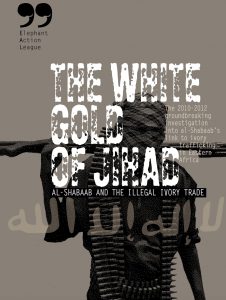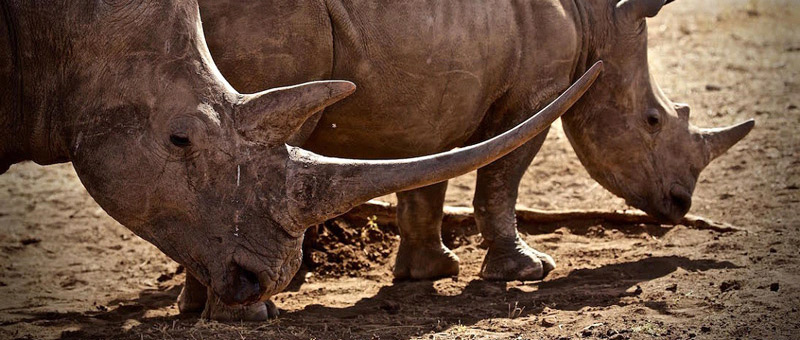THE FIRST INVESTIGATION INTO IVORY AND TERRORISM (published in January 2013 as Elephant Action League)
Poaching and wildlife trafficking, especially ivory and rhino horn, are a source of funding for terrorist groups, including al-Shabaab, the al-Qaeda-backed Somali terror group, the Lord’s Resistance Army (LRA) of Joseph Kony and the Darfur’s Janjaweed militia.
The complex international ivory trade, fuelled largely by Chinese demand, also involves elements of the military from the Congo, South Sudan and Uganda.
Between 2010 and 2012, Andrea Crosta and a colleague conducted a 18 months investigation on the Somali terrorist organization al-Shabaab and the ivory traffic. It was the very first investigation ever on ivory and terrorism.
The investigators, using a unique network of contacts developed during their years as security and intelligence consultants, including working with Somali political figures, wanted to collect first-hand information and assess the entity of this specific traffic, beyond anecdotes and rumors. The picture they got was tragic for the elephants and very worrying for all of us…
After several meetings with traders, traffickers, poachers and even ex-warlords, and information coming from within Somalia, they found an indisputable financial trail between the illicit trade in ivory and al-Shabaab. The investigation detailed how al-Shabaab acts as a middleman, filling orders from agents in end-user countries in Asia or the Gulf states. It confirmed that the terrorist group pays better than average prices, making them desirable buyers of illicit ivory from small-medium brokers.

 According to our Somali sources in Kenya and Somalia, in 2010-12 al-Shabaab bought up to 3 tons of ivory each month
According to our Somali sources in Kenya and Somalia, in 2010-12 al-Shabaab bought up to 3 tons of ivory each month
Based on these investigative efforts, we estimated that in that period up to 3 tons of ivory was smuggled from Kenya to Somalia every month and then shipped to Asian countries through Somali ports or loaded onto ships waiting off shore, even directly from the Kenyan coastline. When taking into account the massive scale of elephant poaching and ivory trafficking occurring in East Africa alone in 2009-2012 (and in the years preceding this investigation) coupled with a generally unconcerned political establishment, trafficking up to 3 tons of ivory each month was a very realistic estimate given the political instability in the region, the availability of ivory, and the growing demand/value of ivory in those years.
The published and widely circulated findings from this investigation generated a significant amount of interest from public and private groups, both in terms of positive feedback and cynical skepticism. One specific claim that we made – that al-Shabaab partially funded their activities from proceeds generated by trafficking ivory – was sharply criticized but has also subsequently been proven by other entities and in some cases is the primary rationale for a more targeted focus on this illicit activity by governments.
Similar findings were outlined by Jeffrey Gettleman in famous article appeared on the New York Times in September 2012.
To be clear, the authors have never denied the importance of other far more substantial sources of profit for al-Shabaab – such as charcoal – but through this investigation, we simply exposed an important regional player that contributed significantly to ivory trafficking, at that time, and that the funds generated from this illicit activity were enough to partially fund al-Shabaab’s operations.
The geo-political situation in that part of the world is very different now than it was between 2010 to 2012, which was the context and timeline in which this report was investigated and prepared. Militias and terrorist organizations do not drive elephant poaching and ivory trafficking, but they certainly did play a role then; and the international political and conservation arenas are finding that they continue to do so now.
Download the report here: Report Ivory & al-Shabaab – Oct2016
Note: Some information collected during this investigation were not made public but instead shared with a few trusted security agencies.


